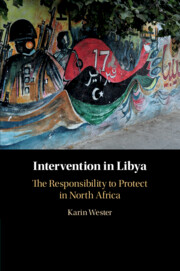Book contents
- Intervention in Libya
- Intervention in Libya
- Copyright page
- Dedication
- Epigraph
- Contents
- Preface
- Maps
- Introduction
- 1 The Origin of the Responsibility to Protect
- 2 Authority Based on Protection in a Historical Context
- 3 Libya and the Era of Qadhafi’s Rule
- 4 The Libyan Uprising and the International Response, February 15–26, 2011
- 5 The Libyan Uprising and the International Response, February 26–March 17, 2011
- 6 Operation Odyssey Dawn
- 7 Operation Unified Protector, NATO, and the UN
- 8 A Divided International Community Confronts a Divided Libya
- 9 Lessons to Be Learned
- Epilogue
- Select Bibliography
- Index
9 - Lessons to Be Learned
Published online by Cambridge University Press: 28 February 2020
- Intervention in Libya
- Intervention in Libya
- Copyright page
- Dedication
- Epigraph
- Contents
- Preface
- Maps
- Introduction
- 1 The Origin of the Responsibility to Protect
- 2 Authority Based on Protection in a Historical Context
- 3 Libya and the Era of Qadhafi’s Rule
- 4 The Libyan Uprising and the International Response, February 15–26, 2011
- 5 The Libyan Uprising and the International Response, February 26–March 17, 2011
- 6 Operation Odyssey Dawn
- 7 Operation Unified Protector, NATO, and the UN
- 8 A Divided International Community Confronts a Divided Libya
- 9 Lessons to Be Learned
- Epilogue
- Select Bibliography
- Index
Summary
The study concludes that the case of Libya fully exposed the potential as well as the complexities inherent in the responsibility to protect. The political-moral imperative encapsulated by the principle played a decisive role in the Security Council’s decision to authorize the use of force in order to protect civilians – which most likely averted mass atrocities. However, the responsibility to protect provided a highly fragile basis for military enforcement action without host state consent – by leaving essential questions regarding the legitimacy of international authority and the relation of international actors to local actors unresolved. The chapter examines the implications of the Libyan case for the normative development of the responsibility to protect. Subsequently, a number of conclusions are drawn regarding specific aspects of the principle. These concern the concept of "the international community"; collective security arrangements; questions of neutrality and impartiality; and consistency between the intervention and pre- and post-intervention politics.
Keywords
- Type
- Chapter
- Information
- Intervention in LibyaThe Responsibility to Protect in North Africa, pp. 290 - 315Publisher: Cambridge University PressPrint publication year: 2020



